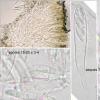
08-01-2026 21:22
 Blasco Rafael
Blasco Rafael
Hola, He recogido esta muestra de Orbilia sobre Re

07-01-2026 10:24
 Danny Newman
Danny Newman
Pezicula sp. on indet. hardwood Appalachian Highl

07-01-2026 22:22
 Danny Newman
Danny Newman
Tatraea sp. on indet. hardwood The Swag, Great Sm

07-01-2026 17:29
 Marc Detollenaere
Marc Detollenaere
Dear Forum,On a barkless Populus I found some smal

10-11-2021 17:33
 Riet van Oosten
Riet van Oosten
Add-on topic http://www.ascofrance.com/forum/7059

07-01-2026 10:05
 Danny Newman
Danny Newman
cf. Chaetospermum on XylariaCosby Campground, Grea

02-01-2026 17:43
MARICEL PATINOHi there, although I couldn't see the fruitbody, I

04-01-2026 17:45
 Stephen Martin Mifsud
Stephen Martin Mifsud
I was happy to find these orange asmocyetes which
A Calycina-like tiny one
Michel Hairaud,
31-10-2021 12:13
 Bonjour,
Bonjour, Est il possible de m'orienter pour cette récolte sur Fagus dégradéavec ces seuls éléments et documentation de qualité médiocre :
Apos jaune de souffre, à marge non lisse, obconiques, jusqu'à 0,3 mm de diamètre.
Asques IKI + de type Calycina, H+, à 8 spores, 70-75 x 8-11, PS 45-50.
Spores septées, 18-20 x 3-4 µm, OCI = 4, ne devenant pas violettes dans le CRB, (sauf overmatures)
Paraphyses droites, cylindriques, avec 2 rangées de VBs. , x 3-4 µm
Merci
Amitiés Michel
Hans-Otto Baral,
03-11-2021 18:36

Re : A Calycina-like tiny one
Hi Michel
I don't know why I missed your post. This is "Calycellina" ochracea, you find it in my Pezizellaceae folder under citrinula-ochracea.
Unsequenced species, of unclear generic relationship.
Zotto
Michel Hairaud,
03-11-2021 23:41

Re : A Calycina-like tiny one
Merci Zotto,
It actually fits your folder samples which I had not seen.
Calycellina was my first idea actually but I was not convinced by the BRC reaction on spores ,( only positive on some overmature spores in that collection)
And as the collection was rather poor , there is nothing correct left for sequencing .
Amitiés. Michel
It actually fits your folder samples which I had not seen.
Calycellina was my first idea actually but I was not convinced by the BRC reaction on spores ,( only positive on some overmature spores in that collection)
And as the collection was rather poor , there is nothing correct left for sequencing .
Amitiés. Michel
Hans-Otto Baral,
04-11-2021 13:58

Re : A Calycina-like tiny one
o.k., the species is not that rare. The guttulation like in Cyathicula is totally deviating from the Pezizellaceae as a whole.



